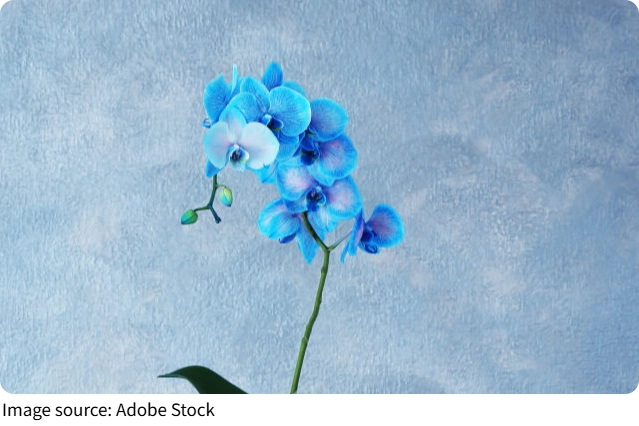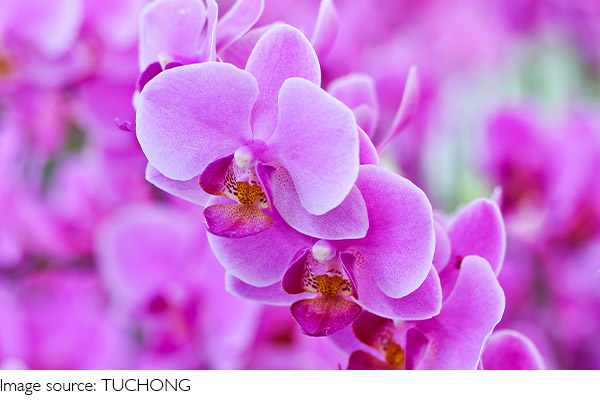The Rare Blue Orchid

Have you ever encountered a flower so mesmerizing that it seems to carry a story beyond just its appearance?
The blue orchid is one such flower—a breathtaking gem in the world of plants. Its petals spread gracefully like butterfly wings, painted in rare and vivid shades of blue that naturally attract attention and admiration.
But the charm of the blue orchid goes beyond its looks; it holds secrets about nature's complexity and the delicate artistry of evolution.
The Science Behind the Stunning Blue Hue
Orchids, with thousands of species worldwide, are celebrated for their elegance and diversity, yet blue is one of the rarest colors in the orchid family. Unlike reds or whites, true blue pigments in flowers are uncommon due to the complex chemistry involved.
The color in blue orchids mainly comes from pigments known as anthocyanins, which interact with cell pH levels to produce a blue appearance. This biochemical balancing act is tricky, which is why genuine blue orchids are so rare.
Interestingly, many blue orchids sold commercially are actually white orchids dyed blue. This practice highlights just how prized and unusual natural blue orchids are in the floral world.
The rare natural blue ones have a softer, more subtle shade compared to the sometimes overly vibrant dyed versions, giving them an ethereal quality.
Graceful Petals That Mimic Butterfly Wings
The shape of the blue orchid's petals is just as captivating as its color. Resembling the delicate wings of a butterfly, these petals open in a way that seems to capture motion and life frozen in time. This butterfly-like structure is not only beautiful but plays a vital role in the plant's reproductive strategy by attracting specific pollinators.
The combination of form and color makes the blue orchid stand out in any garden or floral arrangement, offering a touch of exotic elegance and a reminder of nature's endless creativity.
Why Are Blue Orchids So Coveted?
1. Exotic Rarity: Blue orchids are rare in the wild, making them prized among collectors and enthusiasts. Their scarcity adds a sense of exclusivity and wonder.
2. Symbolic Meaning: Blue orchids symbolize mystery, calmness, and strength. Unlike common red or pink flowers, their blue tone gives them a unique emotional and cultural significance.
3. Decorative Appeal: Their vivid yet soothing color and elegant shape make blue orchids perfect for special occasions, sophisticated interiors, and gifts that convey deep appreciation.
How to Care for Your Blue Orchid
Owning a blue orchid is like having a small piece of tropical paradise, but it requires some specific care to thrive:
• Lighting: Provide bright, indirect sunlight. Too much direct sun can scorch the delicate petals, while too little light prevents blooming.
• Humidity: Blue orchids love humidity. Keeping the environment moist with regular misting or using a humidity tray helps replicate their native tropical conditions.
• Watering: Water moderately, ensuring the roots don't sit in water. Overwatering can cause root rot, so allow the growing medium to dry slightly between watering.
• Temperature: Ideal temperatures range between 65-80°F (18-27°C). Avoid cold drafts or extreme temperature fluctuations.
Bringing Blue Orchid Beauty into Your Life
Adding a blue orchid to your home or garden is more than a decorative choice—it's a way to connect with a rare and delicate part of the natural world. Watching the orchid bloom and thrive is rewarding and can inspire a deeper appreciation for plant life's complexity and beauty.
Next time you see a blue orchid, notice how its soft, rare blue color and butterfly-like petals invite a sense of calm and wonder. This flower teaches us that sometimes rarity and subtlety create the most lasting impressions.

Have you ever held a blue orchid in your hands or seen one bloom up close? Its quiet beauty is a gentle reminder of how nature's wonders often hide in unexpected places, ready to surprise and delight those who take the time to notice. Why not bring a bit of that magic into your life?

 · Nature Team
· Nature Team